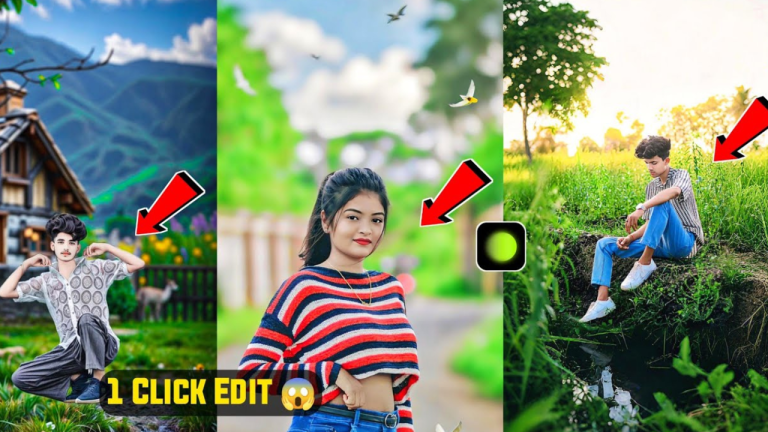Why Meme Culture Rules the Internet in 2025
The internet has many languages, but if there’s one universal way people across the globe are communicating today, it’s through memes. In 2025, meme culture isn’t just surviving—it’s thriving. From politics to pop culture, from global news to daily emotions, memes are shaping how we express, relate, and even understand the world.
At Aaryaeditz Org, we’ve tracked the rise of internet content trends for years. While short-form videos and influencer edits dominate platforms like Instagram and TikTok, memes remain at the heart of the digital conversation. But the question is: Why? What is it about memes that continues to captivate users worldwide?
Let’s dive into the reasons why meme culture now rules the internet, how it evolved to this point, and what it means for creators, brands, and everyday users in 2025.
1. Memes Are Fast, Familiar, and Flexible
Memes are built for the internet’s pace. They spread quickly, adapt even faster, and carry inside jokes that anyone tuned into culture can understand. In 2025, the best memes don’t take hours to create—they’re reactions to moments, headlines, or feelings that audiences instantly recognize.
Whether it’s a still image with a caption, a screen-recorded clip from a reality show, or a remix of a viral moment, memes allow for creativity with minimal tools. You don’t need expensive editing software or a massive following. A clever caption on a relatable image can reach millions.
It’s this simplicity and speed that makes memes ideal for modern online communication.
2. They Capture Emotion Like Nothing Else
One reason memes dominate is because they speak emotion fluently. Whether you’re feeling joy, stress, sarcasm, heartbreak, or pure confusion, there’s probably a meme that perfectly captures that mood.
And in an era when people are more emotionally aware and mentally expressive than ever, memes have become digital mirrors of how we feel. Unlike long posts or polished videos, memes don’t pretend to be perfect. They’re raw, real, and often hilarious.
In fact, most of the viral reels and stories we see trending on Aaryaeditz Org’s platform often begin with meme-style inspiration—relatable emotion expressed with speed and humor.
3. Memes Turn Users Into Creators
You don’t need to be a professional editor, influencer, or writer to participate in meme culture. All you need is a good sense of timing and a feel for humor, irony, or cultural observation. That’s why memes have democratized creativity online.
In 2025, more users are engaged in meme-making than ever before. From meme pages with millions of followers to anonymous accounts that post just for fun, people across all age groups are contributing to the internet’s evolving visual language.
Even major platforms are supporting this shift. Instagram now boosts meme-style content through “quick post” templates, and Threads recently introduced a trending meme feed that updates hourly.
4. Memes Reflect News Faster Than Traditional Media
Before a breaking story hits mainstream media, memes have usually already commented on it. Whether it’s political drama, a celebrity moment, or a sports upset, memes offer the fastest cultural feedback loop online.
They work as a real-time social commentary engine—funny, sharp, and sometimes even more insightful than the headlines themselves.
In 2025, media organizations are now tracking meme trends to understand public opinion. A viral meme can say more about how people feel about an event than a traditional poll ever could. And at Aaryaeditz Org, we’ve found that meme reactions often predict which stories will go viral before they’re officially labeled “trending.”
5. Brands Are Now Speaking Fluent Meme
Once upon a time, brands tried to stay polished, professional, and serious on social media. In 2025, that approach feels out of touch. The brands winning today are the ones that understand meme culture—and know how to use it without being cringey.
Fast food chains, tech companies, entertainment giants—all of them have meme teams now. They speak Gen Z’s humor, reference current internet jokes, and lean into the chaotic, self-aware tone that defines meme culture.
But the key to doing this well is knowing the line between being funny and trying too hard. Meme culture values authenticity above all. When brands get it right, they gain loyalty. When they fake it, the internet is quick to notice.
6. Meme Templates Are Evolving
Memes are no longer just images with captions. In 2025, memes come in many forms:
- Reel memes: Short videos using trending audio with a punchline or twist
- Carousel memes: Multi-slide Instagram posts that build up a joke or story
- Thread memes: Text-based humor stretched across multiple replies
- Cinematic memes: Stylized video edits that parody trailers, scenes, or music videos
- AI-generated memes: New memes created with text-to-image tools, now a part of visual storytelling
This evolution has allowed memes to stay fresh. As formats change, so do the jokes. And with more tools available than ever, anyone can build their own viral language with ease.
7. Memes Build Digital Communities
Sharing memes is more than just laughing at a joke. It’s a form of bonding. People build friendships, inside jokes, and entire communities around shared meme humor.
In 2025, Discord servers, private Instagram groups, and even local WhatsApp threads revolve around specific types of memes—from absurdist humor to dark comedy to wholesome, nostalgic edits.
Memes create common ground. They allow people who’ve never met in real life to feel like they understand each other—and in a fragmented digital world, that kind of connection is powerful.
8. They’re Political, Personal, and Everything in Between
In recent years, memes have become powerful tools for political and social commentary. From election seasons to activist movements, meme accounts are shaping how people understand—and react to—real-world issues.
But memes can also be deeply personal. They can help people talk about mental health, relationship struggles, or everyday anxiety in ways that feel safe, understood, and even funny.
That dual role—being both silly and serious—is why memes are more than just jokes. They’re a form of modern storytelling.
9. Memes Are the Internet’s Archive
Years from now, when people look back at how the world felt in 2025, they won’t just look at news reports. They’ll scroll through the memes.
Memes document moments in real time. They capture the collective mood, the phrases people used, the issues they cared about, and the humor that got them through it. From global events to pop culture fads, memes are the internet’s way of keeping a living archive of modern life.
Final Thoughts: The Meme Reign Continues
Meme culture rules the internet in 2025 because it meets people where they are—fast, funny, emotional, and deeply in tune with how people think and feel online.
It’s not just entertainment. It’s communication. It’s commentary. It’s connection.
At Aaryaeditz Org, we don’t just follow memes. We study them, create them, and understand their deeper impact. They are more than just scrollable content—they are signals of what matters to people now.
And if you’re a creator, editor, or brand trying to stay relevant, remember this: you don’t need to chase every trend. But you do need to listen to the language of the internet. And in 2025, that language is memes.





